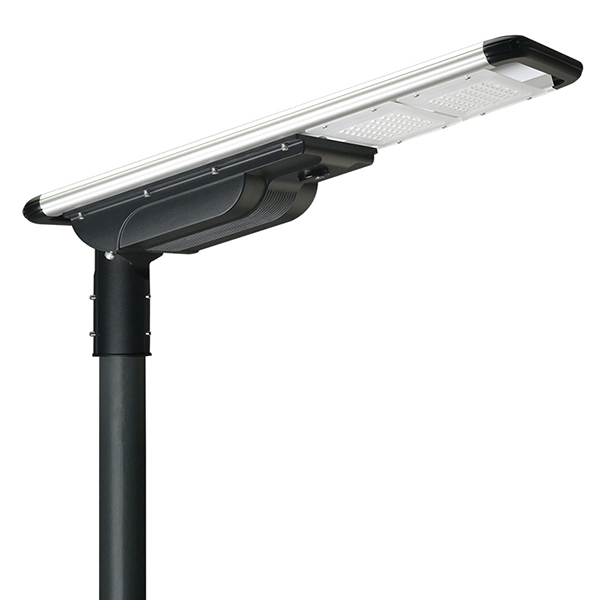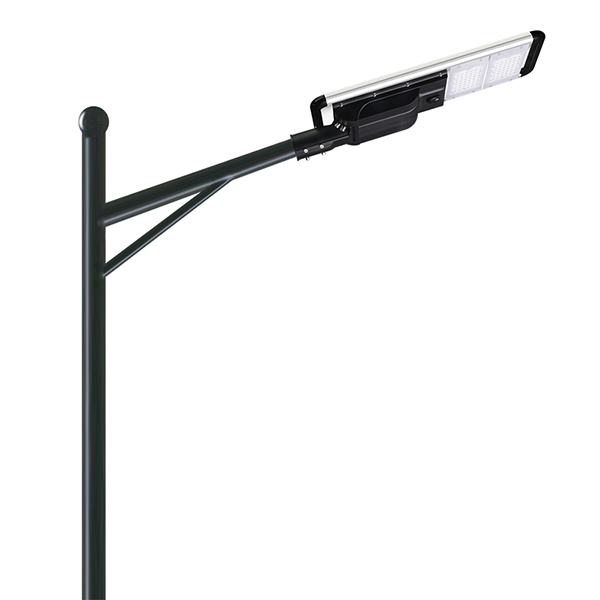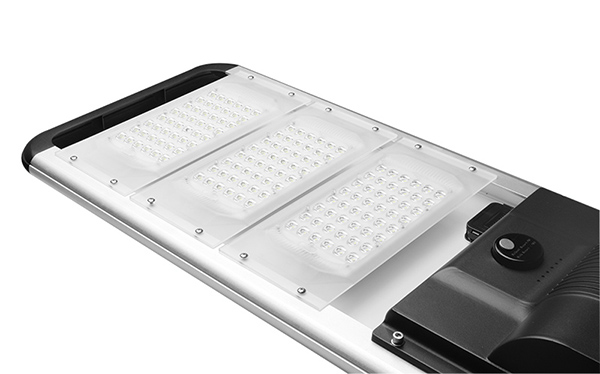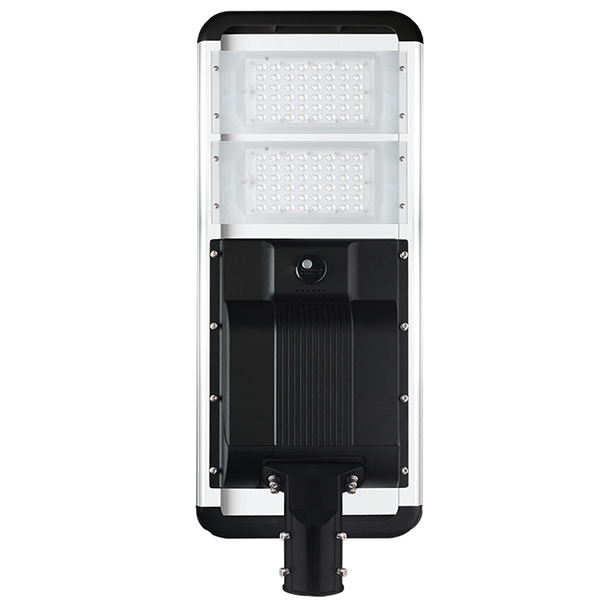Recently, the government work report of the two sessions put forward the development goal of accelerating the construction of a new energy system, providing authoritative policy guidance for the promotion of energy-saving technologies in national lighting and the promotion of green energy lighting equipment.
Among them, new energy lighting fixtures that do not connect to the commercial power grid and use independent power generation equipment to provide energy applications have become an important member of the new energy system. They have become essential products for urban lighting management departments and lighting fixture consumers to achieve zero energy consumption costs and are also the mainstream development direction of green lighting technology in the future.
So, what are the current development trends in the field of new energy lighting? What trends are they conforming to? In response to this, Zhongzhao Net has showcased the hot trends in the four major new energy lighting markets in recent years and analyzed their interrelationships and respective advantages and disadvantages in the application and popularization, providing a reference direction for the achievement of energy-saving and low-carbon development goals in the lighting industry.
Solar Lighting
With the increasing depletion of Earth's resources and the rising investment costs of basic energy sources, various safety and pollution hazards are ubiquitous. In recent years, under the keen demand for clean lighting energy and low-cost lighting electricity from all sectors of society, solar lighting has emerged, becoming the initial off-grid lighting mode of the new energy era.
Solar lighting devices convert solar energy into heat energy to generate steam, which is then converted into electrical energy through a generator and stored in a battery. During the day, the solar panel receives solar radiation and converts it into electrical energy output, which is stored in the battery through the charge-discharge controller; at night, when the illuminance gradually decreases to around 101 lux and the open circuit voltage of the solar panel is about 4.5V, the charge-discharge controller detects this voltage value and the battery discharges to provide the required electrical energy for the light source of the luminaire and other lighting equipment.

Compared with the complex installation of grid-connected lighting fixtures, outdoor solar lighting fixtures do not require complex wiring. As long as a cement base is made and fixed with stainless steel screws, installation is simple; compared to the high electricity fees and high maintenance costs of grid-connected lighting fixtures, high-power solar lighting fixtures can achieve not only zero electricity costs but also no maintenance costs. They only require a one-time payment for purchase and installation costs. In addition, solar lighting fixtures are ultra-low voltage products, operationally safe and reliable, without the safety hazards of grid-connected lighting fixtures caused by aging of circuit materials and abnormal power supply.
Due to the significant economic cost benefits brought by solar lighting, it has spawned different application forms, from high-power street lights and courtyard lights to outdoor applications such as medium and small power signal lights, lawn lights, landscape lights, identification lights, insecticidal lights, and even household indoor lighting fixtures, with solar lighting technology support. Among them, solar street lights are the most in-demand solar lighting fixtures in the current market.
According to authoritative analysis data, in 2018, the domestic solar street light market was worth 16.521 billion yuan, which has increased to 24.65 billion yuan by 2022, with an average annual growth rate of about 10%. Based on this market growth trend, it is expected that by 2029, the solar street light market size will reach 45.32 billion yuan.
From a global market perspective, authoritative data analysis also shows that the global scale of solar street lights reached 50 billion US dollars in 2021, and it is expected to reach 300 billion US dollars by 2023. Among them, the market volume of such new energy lighting products in Africa has continuously expanded from 2021 to 2022, with an installation growth of 30% in these two years. It can be seen that solar street lights can bring strong market economic growth momentum to underdeveloped regions globally.

In terms of enterprise scale, according to incomplete statistics from enterprise investigation, there are a total of 8,839 solar street light manufacturers nationwide. Among them, Jiangsu Province, with a huge number of 3,843 manufacturers, occupies the top spot by a large margin; followed closely by Guangdong Province. In this development trend, Zhongshan Guzhen in Guangdong Province and Yangzhou Gaoyou, Changzhou, and Danyang in Jiangsu Province have become the top four solar street light production bases in terms of scale nationwide.
It is worth noting that domestic well-known lighting enterprises such as Opple Lighting, Ledsen Lighting, Foshan Lighting, Yaming Lighting, Yangguang Lighting, SanSi, and international lighting enterprises entering the domestic market such as Xinuo Fei, OSRAM, and General Electric have made meticulous market layouts for solar street lights and other solar lighting products.
Although solar lighting fixtures have brought significant market momentum due to the absence of electricity costs, their complexity in design and higher manufacturing costs due to the need for more components to support their operation compared to grid-connected lighting fixtures make their prices higher. More importantly, solar lighting fixtures use a energy mode that converts solar energy into heat energy and then into electrical energy, which leads to a loss of energy during this process, naturally reducing energy efficiency and also affecting light efficiency to some extent.
Under such functional requirements, solar lighting products need to evolve into new functional forms in the future to continue their strong market momentum.

Photovoltaic Lighting
Photovoltaic lighting can be said to be an upgraded version of solar lighting in terms of functional characteristics. This type of luminaire provides energy for itself by converting solar energy into electrical energy. Its core device is the solar panel, which can convert solar energy into electrical energy, stored in batteries, and then provide lighting through LED light sources equipped with light control devices.
Compared with solar lighting fixtures that require energy conversion twice, photovoltaic lighting fixtures only require energy conversion once, so they have fewer devices, lower manufacturing costs, and consequently lower prices, making them more advantageous in application popularization. It is particularly worth noting that due to the reduction in energy conversion steps, photovoltaic lighting fixtures have better light efficiency than solar lighting fixtures.
With such technical advantages, according to authoritative analysis data, as of the first half of 2021, the cumulative installed capacity of photovoltaic lighting products in China has reached 27 million kilowatts. It is expected that by 2025, the market size of photovoltaic lighting will exceed 6.985 billion yuan, achieving accelerated breakthrough development in this industry sector. It is worth noting that with such a market growth scale, China has also become the world's largest producer of photovoltaic lighting fixtures, occupying more than 60% of the global market share.

Although it has outstanding advantages and promising market prospects, photovoltaic lighting applications also have noticeable drawbacks, among which weather and light intensity are major influencing factors. Overcast and rainy weather or nighttime conditions not only fail to generate sufficient electricity but also make it difficult to provide adequate lighting energy for lighting sources, affecting the output efficiency of photovoltaic panels and reducing the stability of the entire photovoltaic power generation system, thus shortening the lifespan of light sources in fixtures.
Therefore, photovoltaic lighting fixtures need to be equipped with more energy conversion devices to compensate for the drawbacks of using photovoltaic equipment in dim environments, meeting the application requirements of the growing market scale.
Wind and Solar Complementary Lighting
At a time when the lighting industry is puzzled by the limitations of energy
Post time: Apr-08-2024
